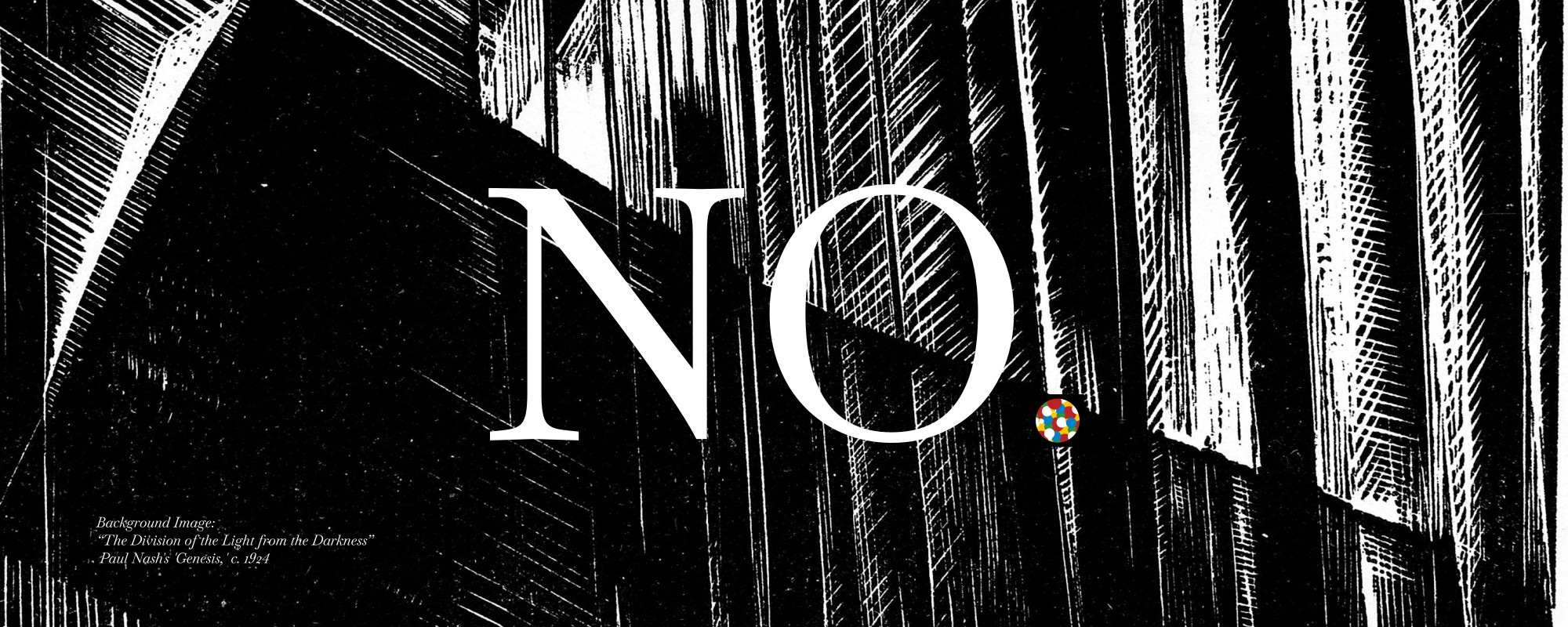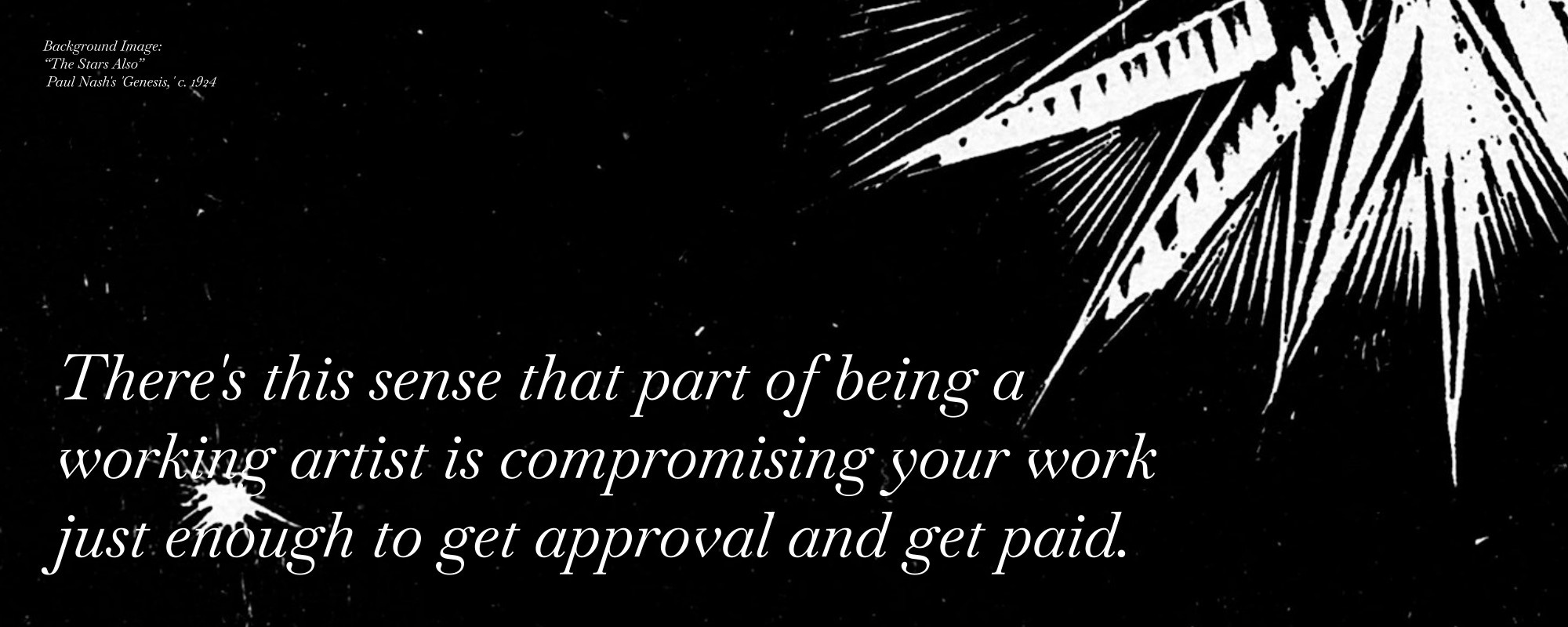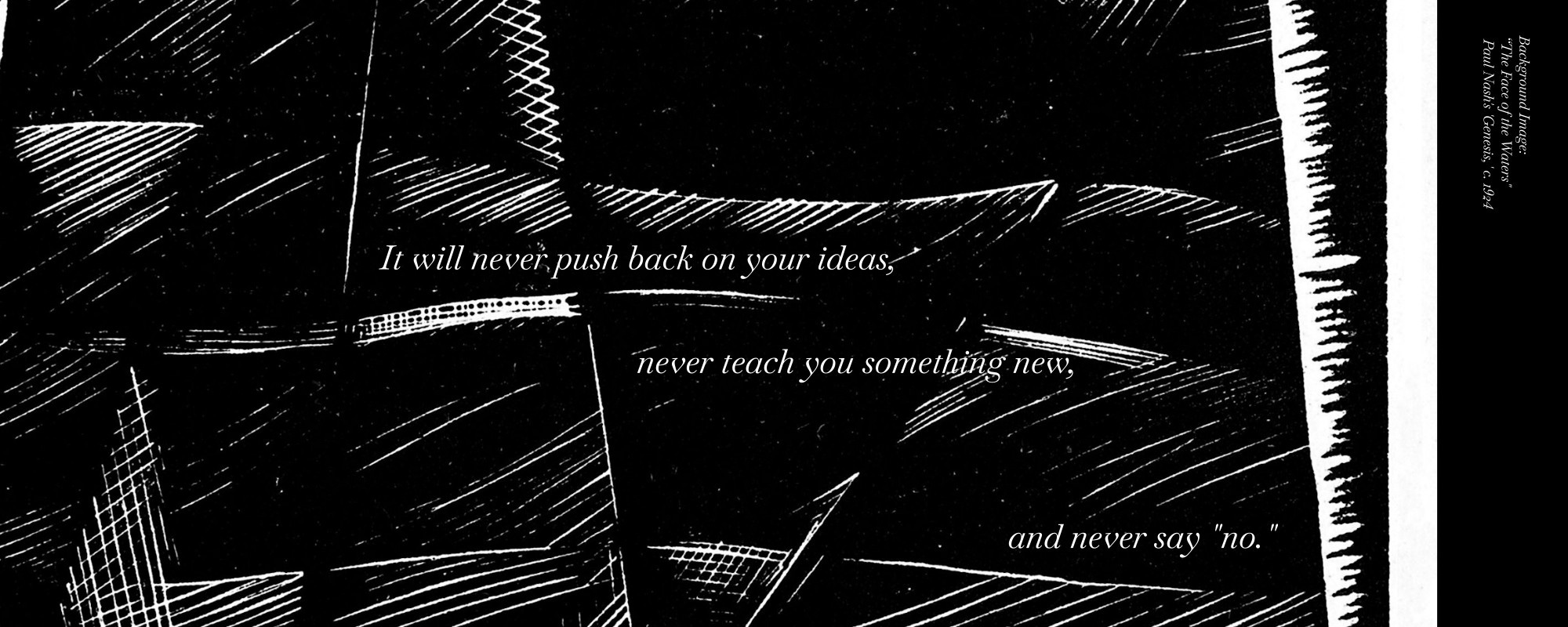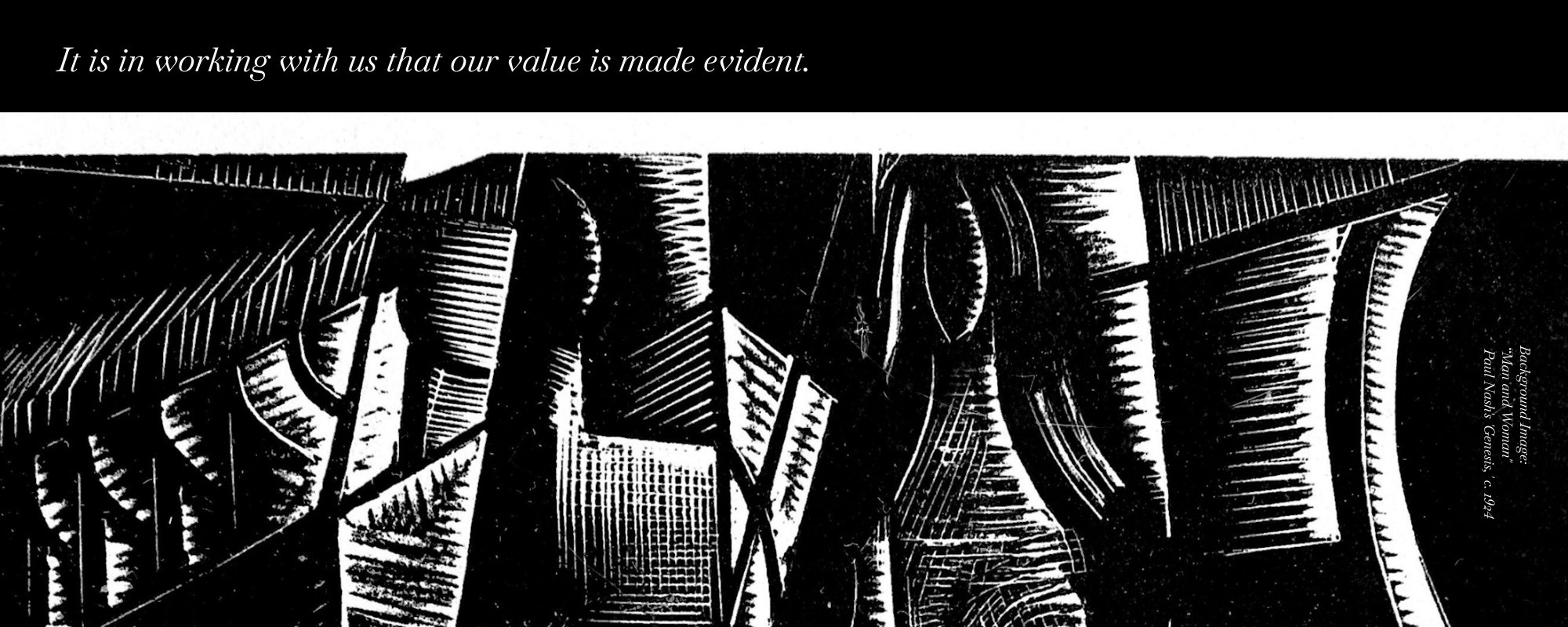The biggest threat AI poses to working artists.
How generative AI is creating a world of horrible clients (and what we can do about it).
Hi,
There's been a lot of talk over the last few years about generative AI and the threats it poses to creative professionals. Two prominent artist unions in Hollywood both went on strike in 2023, with one of their major demands being around setting limits and rules on how they would be expected to work with AI, and how their work could be used to train AI models. AI is becoming seen as an "existential threat" to creative professionals, but, while these issues are important and are definitely a risk to the livelihoods of many working artists, I feel like we're missing the biggest threat generative AI poses entirely.
Whenever AI comes up, there's typically some kind of acknowledgement that there are "unanswered questions" about the impacts generative AI will have on copyright, or how artists may or may not be expected to incorporate it into their workflow. You've probably heard someone say something like "you either learn to use it or you get left behind" or that it's "only going to get better every day" (in spite of the fact that this doesn't actually appear to be true). We hear more and more about AI stealing jobs, stealing intellectual property, making people redundant or trivializing once lucrative work.
We seem to be under the impression that the risks of AI all come from AI.
But I've noticed a distinct lack of discussion about one of the biggest threats I think generative AI poses to artists: it's completely skewing client expectations, and training people to be the worst kind of client possible.
In other words, AI is making it harder for us to work together.
Why do working artists always complain about clients?
I think one of the worst attitudes that permeates the professional creative mindset is this adversarial, anti-client feeling. It's so common that it's a trope. Since the beginning of blogs and online social spaces, you can see artists sharing grievances and jokes about how frustrating it can be to work with clients. "Make my logo bigger" is such a common complaint that its become a cliché. When you think about it, this attitude represents such a nasty, elitist mindset that gives no space or empathy to another person's lack of design education (or interest) and completely ignores what their priorities are for their work.
But why does this happen? Why are working artists so at odds with the people who make their careers possible? Why is there so much resentment towards the people you're meant to be helping through your work?
The obvious answer is that clients just don't "get it." They lack the formal training that we have, and when they ask for (or, more often complained about, demand) something, it betrays an ignorance and lack of respect on the client's part for the craft that the artist has honed and perfected. In commercial art, you'll often hear people compare their work to skilled trades, complaining that "you wouldn't tell a plumber how they should fix your drain!" (I'd like to note that, having worked as both an artist and a contractor, that this argument is very incorrect and people will tell a tradesperson how to do their job). There's a sense that part of being a working artist is compromising your work just enough to get approval and get paid. A great commercial artist is one that manages to get great work done without letting the client ruin it by interfering with the process.
Not too many years ago, I was right there with these artists. I hated clients about as often as I liked them. Over time, I found that this mentality is a bit of a self-fulfilling prophecy. If you think your clients are all idiots who are going to try to sabotage your work and undermine your craft, then you're way more likely to perceive any feedback or critique that way. What could have been a process of collaboration and respect instead becomes one of frustration and conflict - often expressed behind the scenes to colleagues or not expressed at all, instead left to fester under the surface as it erodes your love of the craft and your career entirely.
When things go on like this, the resentment builds. The attitude becomes one where both sides of the work begin to see the other as "the problem." It becomes "Artist VS Client" - a battle between the righteous and the perverse.
Wasn't this supposed to be fun? Aren't we making art here?
The fact of the matter is that there is often an aggressive, antagonistic mentality baked into a lot of creative labour, and that sets the stage perfectly for AI to swoop in and solve our client's biggest problem. Us.
When all you want is someone who does what you ask.
Everyone's Creative. That's where I begin. But the reality is that some people practice creative work more regularly than others, and they create things that require more than just creativity - they require education, knowledge and experience, too. That is why (not because some people are creative and other people aren't) contract creative work exists. Illustrators, graphic designers, writers, videographers, photographers, interior designers... all these careers are built on the idea that there is value in hiring someone to contribute their creative labour to your project or endeavour.
But what's really going on when you hire someone to work on a creative project for you?
This is an open discussion. There's no "right" answer to that question. As working artists, we often set the terms of what that means when we start the work. "How will we work together?" should be the first question asked before you commit to working with anyone. What you start to realize, after working on creative projects for different kinds of people, is that the unspoken answer to that question varies quite a lot depending on the client. When the answer is "I want you to do exactly what I tell you to." we start to see where the seeds of frustration and resentment are planted.
The value we offer is often in saying "no."
I firmly believe that it's a creative professional's responsibility to set the expectation for and teach clients how you will work together. The problem is that, most often, artists are taking work from a place of desperation and scarcity, and so their instinct is to want to make their clients happy. Nothing could make people happier than saying "yes" to everything they ask for, right?
This is another way the resentment begins to fester and take hold. You want to win jobs and be "easy" to work with, so you bend to your client’s requests. Even if you think you have a better solution or a reason why, say, making their logo bigger won't help with the design, you set that to the side. What you're doing isn't just compromising your art, though - you're training your client to expect you to do whatever they say.
When you instead set the expectation that your job is to help the client solve their problem, you take on the role of an advisor and not just a hired hand. The value you bring isn't just in doing what the client asks - it's in sharing your knowledge, experience and ideas to help make the work better for what it is they say they want it to do. That often means challenging their preconceived notions and suggesting other solutions. I've found approaching work from this angle to reveal that one of the most valuable things I offer to a client isn't in doing what they ask, but instead in saying "no" (and also explaining why).
Setting the wrong expectations at a super-human scale.
This is why generative AI is such a threat to working creatives (and collaboration, as a whole).
Think about how you use a generative AI tool: you type a request into ChatGPT or Midjourney or Adobe Firefly and you get a fully finished attempt at fulfilling your request immediately. The process of "refining" AI slop is in making additional requests: "make it sound more formal," "make the person look happier," "make it sound less like AI." These demands then result in more fully finished products and the process continues. You make a small request, the AI tool immediately fulfills it exactly as you asked, then you make more requests. It is iterative, but with a huge amount of waste and no need for up-front thought or discussion. It's a one-sided, infinitely affirming and repeatable process of figuring out what you want by creating a huge amount of things you don’t want.
Now imagine you replaced that AI tool with an illustrator or a composer or any working artist. Imagine being that artist. You've just described the worst client anyone has ever worked for - expecting immediate, finished work that you will continue to edit and refine ad infinitum until they're happy with it. It's exactly the kind of mindset I believe we need to be training people out of when they want to hire someone for creative work, and it's the way we end up with the least successful creative output.
Generative AI is a mindless yes-man. It's a desperate, obsequious worker drone that is only capable of doing things exactly how you asked. It will never push back on your ideas, never teach you something new, and never say "no." And yet, this workflow appears to be what we say we want from creative professionals. If AI can replace screenwriters, photographers, copy editors or graphic designers, then we seem to be saying that we want artists to just shut up and do whatever we ask. If we’re afraid of AI taking our jobs, then are we saying that’s all we have to offer?
If that's true, then things don't bode well for the humans who are left behind, trying to compete against AI. If there's really value in never pushing back or contributing new thoughts to a client's work, then we're going to have a hard time making the case that working with humans is somehow better than working with AI "just because."
This is the biggest risk we face: letting that lie become so accepted that we forget there was ever another way.
Why I'm not afraid of AI taking my job.
This is why I know Generative AI will never take my job. It's really all just in how you frame it for yourself and your clients. I don't see myself as a contract worker who draws or designs what people ask me to - that is a job that, it turns out, is easy for AI to take away. Instead, I see myself as a human you can work with on creative projects. Humanity is baked into what I do. I want to collaborate with clients - hear their ideas and help them express something inside their hearts. The work I do is fundamentally human. You can never hire a machine to be a human. That doesn't make any sense. What are you talking about?
Now, AI may not be able to take that newly-defined job away from me, but it could siphon all the clients away from the kind of work I want to do and leave me with a spiritually pure job description and no paying clients. That's where communication comes in.
The only way I see out of this bizarre dystopia (where we're rapidly giving all our fulfilling, creative work to machines in order to make more time for us to work menial jobs and be miserable) is if we embrace a different concept of what creative work is. We can't keep talking about our work like it’s just a product we manufacture and sell, because machines will always be able to do that faster and cheaper. The value in what working artists offer has to be in everything that happens before the finished product is created. It is in working with us that our value is made evident. Skipping over that part is where working with AI compromises the work, and that is the value AI generated work will always be missing.
We need to start talking about this more. We need to show people what they're robing themselves of when they write their website copy with ChatGPT or use AI to generate the illustrations for their children's book. It's clear that we can't force people to work with us "because it's the right thing to do," so why even try? We need another tactic.
We need to show clients that the value in working with us is in working with us, and not just in what we output at the end. We need to be honest with ourselves, and acknowledge that doing everything our clients ask often gets things approved more quickly, but that it is also robbing them of the real value we can offer. If it were only about the output, then we might as well be machines ourselves.
Obviously this dynamic - positioning yourself as a collaborator and not just a hired hand - requires more trust and mutual respect between the artist and the client. There's a privilege to being able to push back against your clients or refuse work from someone who doesn't agree to the terms you set for working together. But if AI is taking all the work for clients who just want a yes-man anyways, then there isn't really any point in trying to appease the people who don't value your humanity in the first place. It's not an ideal position to be in, but it forces all of us to raise the bar if we want the chance to get any work at all.
If nobody "has to" work with you, then you need to show them why they should want to work with you. That's what we should all be working on, if we don’t want to be made obsolete.
Have a wonderful day!
Love,
Simon 🐒
🔗 Links & Thinks 🧠
Linus Boman made a great video recently pointing out a lot of the misconceptions we have about the intention behind creative work and how "objective" standards of design ignore this. I'd love more working artists to adopt this kind of mindset - and for god's sake stop saying you're "fixing" other people's work when you have no concept of what went into it.
As I was wrapping up this post, Freya Holmér released a great and cathartic video demonstrating the rot AI is creating on the internet. It’s not a fun watch, exactly, but it feels like a perfect dive into one of the consequences of this new technology and why we should be way more skeptical of it’s use in everything.
The artwork in this essay was created using prints from Paul Nash’s 1924 series “Genesis.” Sourced from the incredible Public Domain Review. The text is set in Baskervville. I created these graphics in the open source vector design program Inkskape, as a first experiment with this free tool.







